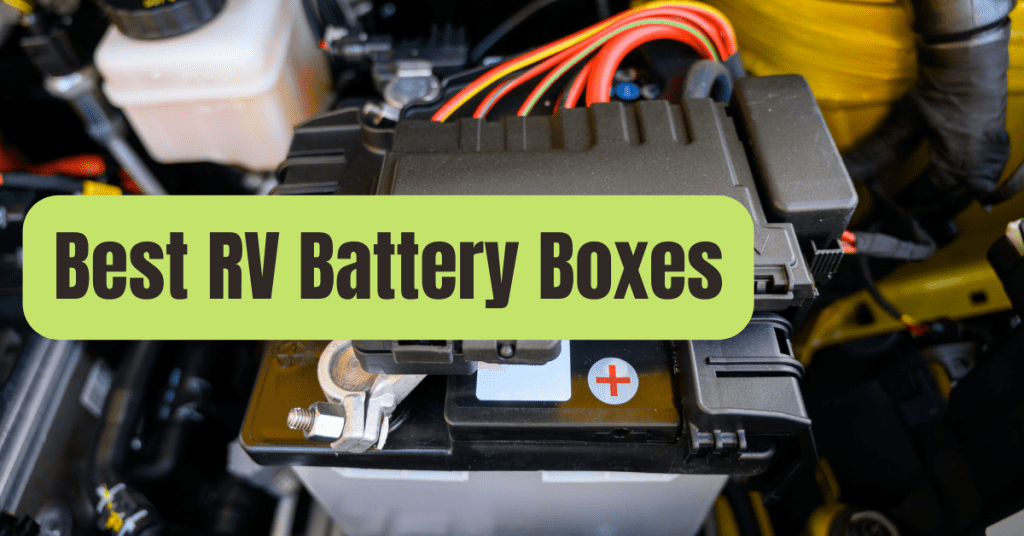Which is better, lithium or AGM batteries? While there isn’t a solar battery bank that “suits all,” picking one for your camper might be difficult.
For our battery bank, we just made the conversion from AGM batteries to lithium (LiFePO4) batteries.
Here is why we chose what we did.
Before we begin, a little note.
This article is merely one in a lengthy series on “How to Install a DIY Camper Van Electrical System.” There may be certain topics we’ve previously addressed if you just came onto this post without noticing that.
Additionally, to help you save time and stress, we provide interactive solar wiring diagrams that are a comprehensive, A to Z solution for teaching you precisely what components belong where, what size wires to use, recommended fuse sizes, wire lug sizes, and a whole host of other things.
AGM to Lithium Battery Conversion
AGM and lithium are the two most often used varieties of solar battery banks.
Although flooded lead acid batteries are an alternative, we won’t discuss them today due to their many drawbacks (need to be vented, keeping up with chemistry, water levels, etc.).
Trojan AGM batteries were used when we first built up our campervan’s solar system.
Even though we wanted lithium at the time, there wasn’t a simple, widely accessible drop-in battery for lithium (that we knew of).
But now that lithium batteries have advanced significantly, a variety of solutions that are simple AGM battery replacements are available.
Unfortunately, we have decided to replace our 700 amp-hour AGM battery bank with a 600 amp-hour lithium battery bank.

AGM vs. Lithium Battery Capacity
Now hold on, if we are moving from 700AH to 600AH, how are we upgrading?
AGM batteries prefer not to be discharged over 50% of their capacity since doing so will severely shorten the battery’s lifetime.
Our 700AH of AGM essentially amounted to 350AH.
Lithium, on the other hand, has a real 600AH of useful battery capacity and can be fully emptied without affecting the battery’s longevity.
In this essay, we’ll compare 200AH of useful battery capacity for the purpose of simple calculation.
In other words, 4 x 100AH Trojan AGM batteries verses 2 x 100AH Battle Born LiFePO4 batteries.
The reason we picked these two brands among the many, many others available for each kind of battery is that they are both a) the best in their respective categories and b) the ones we have had firsthand experience with.
Weight Savings: A Case for Lithium Batteries
As a straight drop-in replacement for AGM batteries, Battle Born LiFePO4 batteries are incredibly simple to set up and use.
Let’s discuss some of the main advantages of lithium vs AGM.
When creating a camper van, weight is the first and foremost consideration for everyone.
A 200AH lithium batterybank weights 58 pounds overall, or 29 pounds for a 100AH Battle Born lithium battery.
In contrast, AGM batteries weigh a stunning 69 pounds each unit, making the whole battery bank weigh 276 pounds.
276 pounds compared to 58 pounds.
What a significant change!

AGM vs. Lithium Battery Bank Cost
The initial expense of a lithium battery bank for your solar system is its major disadvantage.
That is a sizable savings, right?
Well, not quite yet…
Yes, purchasing lithium batteries requires a sizable upfront commitment.
However, let’s discuss replacement expenses and long-term costs.
Lithium Battery Lifespan
Lithium batteries made by Battle Born are intended to survive 3,000–5,000 cycles.
We’ll assume the worst-case scenario of 3,000 cycles for this example.
Battery depletion followed by recharging is referred to as a “cycle.” For the sake of the illustration, let’s pretend that one cycle equals one day once again (use your batteries all night, then let them charge up during the day when the sun comes up).
Given that Denver has 300 days of sunlight on average each year, we would anticipate that this battery bank will operate at full capacity for 10 years in Denver.
The battery is intended to retain 75% of its capacity over the first 10 years (3,000 cycles), which means that you would still have a 150AH useable battery bank.
Durability of AGM Batteries
AGM batteries made by Trojan are intended for 1,000 cycles.
However, the Trojan website states that after the battery has used up 50% of its capacity, it is considered to be defective.
It’s not really apples to apples to compare that to Battle Born’s 75% capacity.
Instead, we’ll use this graph (from Trojan) and modify it to reflect how long it will take the AGM batteries to achieve 75 percent, or 150AH, of their useful battery capacity.
According to this graph, the AGM batteries will achieve 75 percent of their capacity after around 525 cycles.
The duration of it, using our Denver example, is 1 year and 9 months.
And it is consistent with the widely established AGM battery lifetime of three years to 50% capacity.
It’s time to move on to the next lesson and discover how many solar panels you’ll need to recharge your batteries now that you know what kind of batteries you’re going to use in your DIY camper van.
Our FREE Interactive Solar Wiring Diagrams put what you’ve learned here to use.
Check them out if you haven’t already since they provide a comprehensive camper van electrical system solution.
Remember that this is only one lesson in a comprehensive course on camper van electrical systems.

Conclusion
Finally, if you found this information useful, it would mean the world to us if you could forward it along to someone who might benefit from it, save it to Pinterest for future use, or post it to a Facebook group when someone asks a question on the topic.
To subscribe and get notifications of new posts, click the bubble in the bottom right corner of the page.
As usual, ask any questions you may have in the comments section below.










